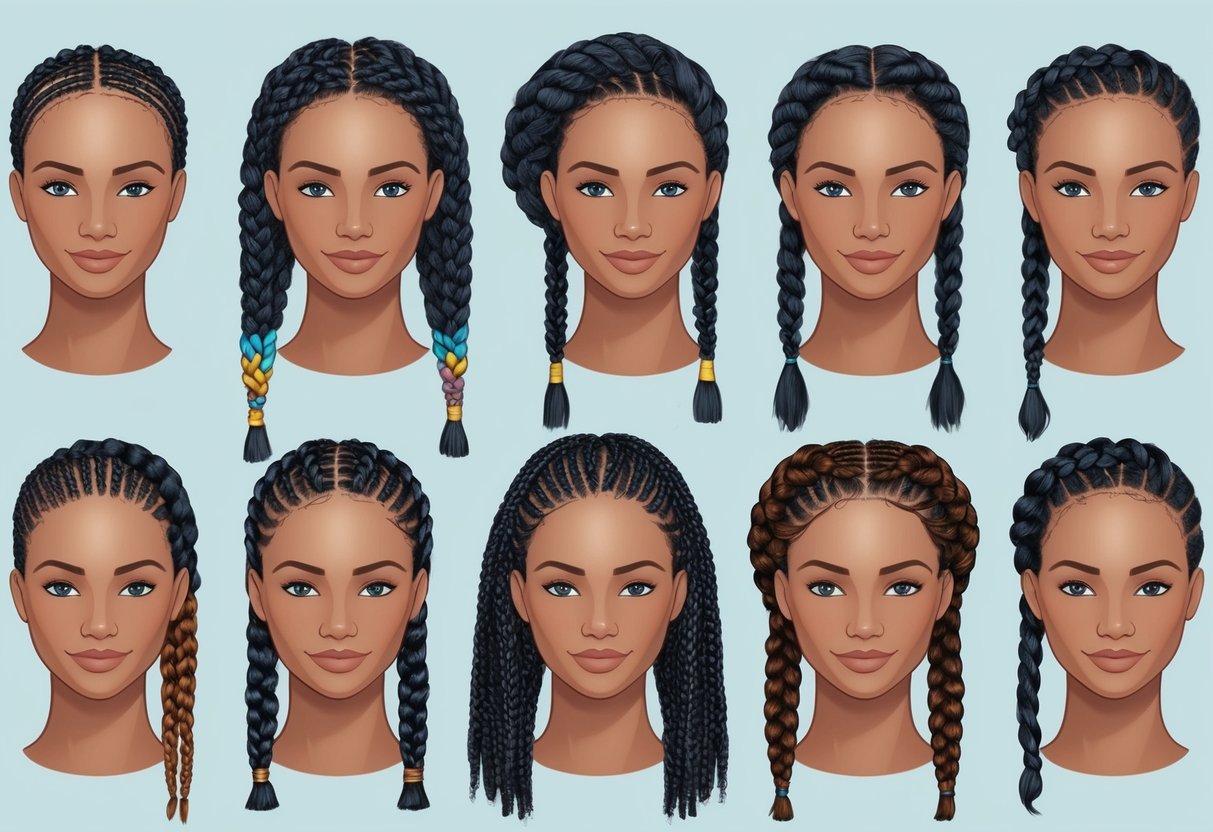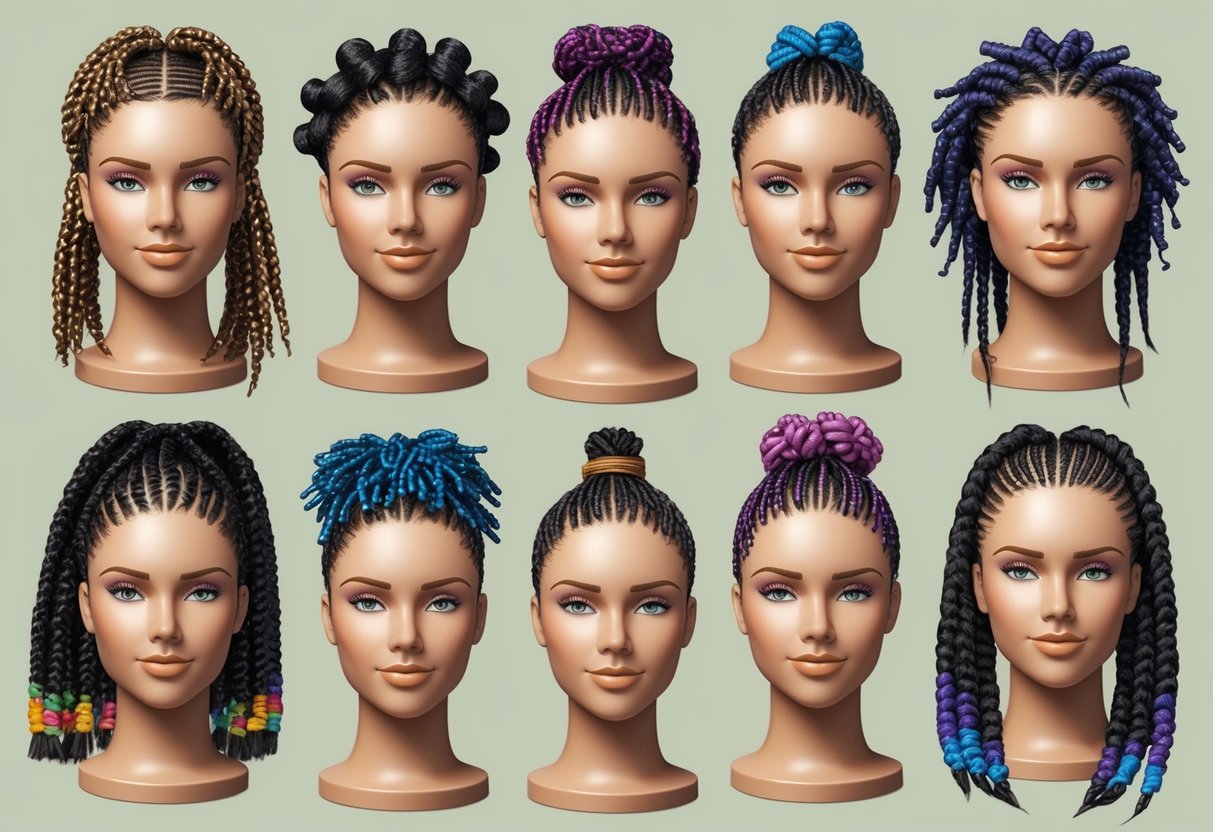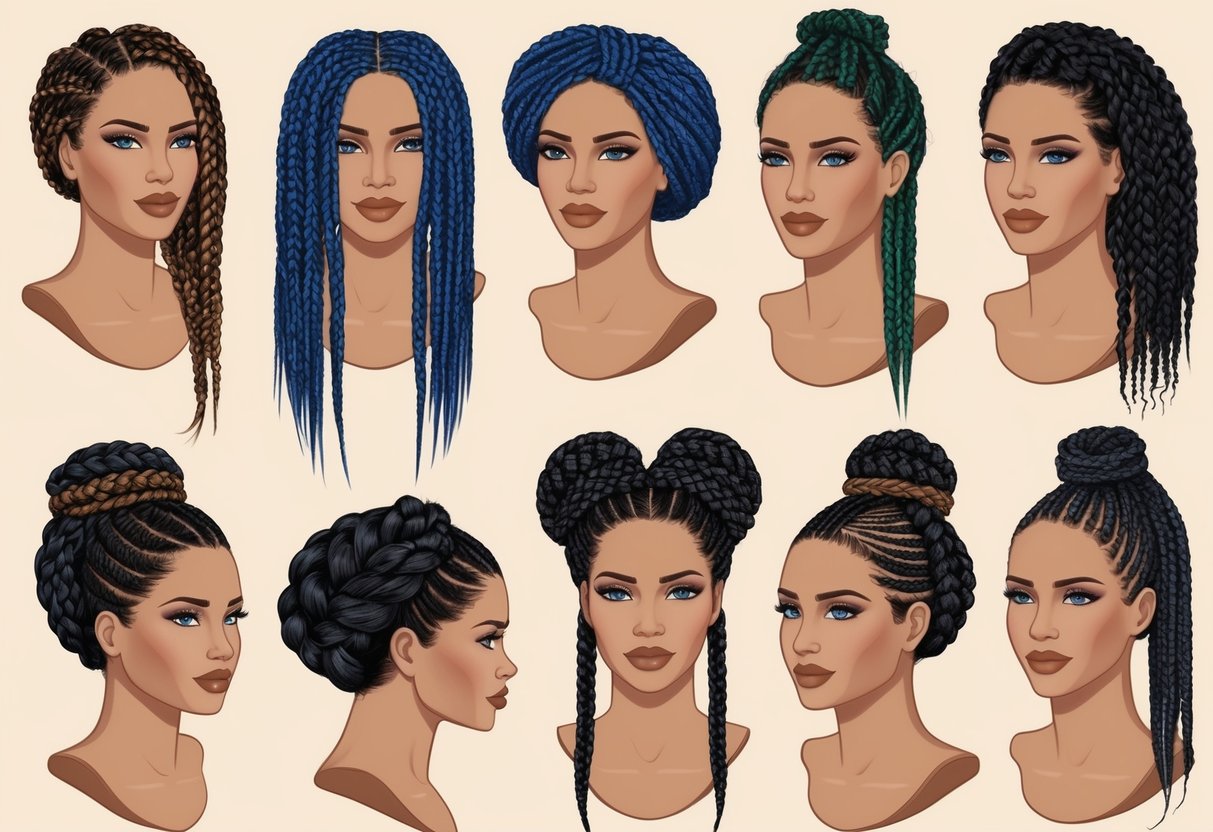
Bantu Knots, Faux Hawk, and Unique Protective Styles

Among the most versatile protective braid styles, Bantu knots and faux hawk braids stand out for their combination of practicality and visual interest. Both hairstyles offer protective benefits while allowing for expressive, customizable looks across hair types, lengths, and textures.
Bantu Knots
Bantu knots have origins in South Africa and remain a staple among protective hairstyles today. The style involves sectioning hair and twisting it into small, coiled buns close to the scalp.
Bantu knots are particularly valued for their ability to shield ends and reduce breakage, making them excellent for retaining length and moisture. These knots suit a wide variety of hair textures, from natural curls to relaxed strands and even locs.
Wearers can choose uniform or irregular parting, various knot sizes, or decorative elements like beads and colorful bands for added style. After unravelling, Bantu knots can create a voluminous, defined curl pattern.
For styling inspiration, see these Bantu knot hairstyles that highlight creative, modern adaptations.
Faux Hawk Braids
Faux hawk braids create a bold silhouette without the commitment of shaving or cutting hair. This protective style involves braiding the sides tightly to the scalp—often with cornrows or Dutch braids—while gathering the center into raised braids, chunky twists, or bantu knots to mimic a mohawk.
The faux hawk braid’s structure makes it a standout option for those seeking an edgy yet practical look. It works for medium to long hair lengths and allows significant customization, including the addition of hair cuffs, colored extensions, or spiral patterns to amplify the visual impact.
Faux hawk braids are especially popular among those who want an updo that stays secure for days while keeping ends tucked away and minimizing manipulation.
Frequently Asked Questions

Properly chosen protective braids help maintain hair health, reduce daily styling stress, and guard against environmental damage. Selecting the right methods and styles for individual hair needs can make a significant difference in growth, breakage prevention, and lasting style.
How can I ensure my protective braids promote hair growth?
To support hair growth, hair should be deep conditioned and moisturized before braiding. Scalp care remains important after installation, so regular cleansing with a gentle, residue-free shampoo and applying lightweight oils help maintain scalp health.
Avoid tight tension near the roots. Protective braids such as box braids or Senegalese twists can protect ends from breakage and retain length when cared for correctly.
What are the top low-maintenance braid styles for keeping hair healthy?
Box braids, cornrows, and two-strand twists are among the best low-maintenance braid styles for healthy hair. These styles require little daily manipulation, help preserve moisture, and minimize hair tangling or knotting.
Low-maintenance options reduce styling frequency, which lessens the risk of mechanical damage.
Which braid styles are most suitable for protecting thin hair?
For thin or fine hair, lightweight and small braids are ideal to prevent unnecessary tension on the scalp. Options such as flat twists and loose cornrows evenly distribute weight and reduce pulling at the roots.
Avoid thick or heavy braids, as they may contribute to shedding or breakage in fine hair. Consultation with a professional braider experienced with fine textures is highly recommended.
How can protective hairstyles be adapted for use while sleeping?
To maintain braids overnight, use a satin or silk scarf, bonnet, or pillowcase to minimize friction. These materials decrease frizz and help retain moisture levels in both the scalp and braided hair.
Gathering braids loosely at night prevents stress at the roots and helps maintain style longevity. Carefully tucking in ends protects against matting and tangling.
What are the ideal braid styles for natural hair to maximize protection and style?
Natural hair benefits most from styles that tuck away ends and reduce daily manipulation. Protective options such as box braids, twists, and cornrows are versatile and highly effective.
Styles that offer both coverage and the ability to easily moisturize the scalp work best during protective periods. Consistent maintenance and gentle installations are key factors for long-term success.
Which protective braiding techniques are recommended to minimize hair damage?
Gentle tension and appropriate parting are essential for healthy braiding.
Heavy-handed braiding or excessive pulling can cause traction alopecia and long-term breakage.
Rotating protective styles with breaks in between allows hair and scalp time to recover.
Avoiding back-to-back installations and ensuring braids are not left in for extended periods help reduce overall stress on the hair, as mentioned in advice shared by experienced stylists.



